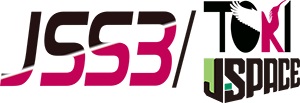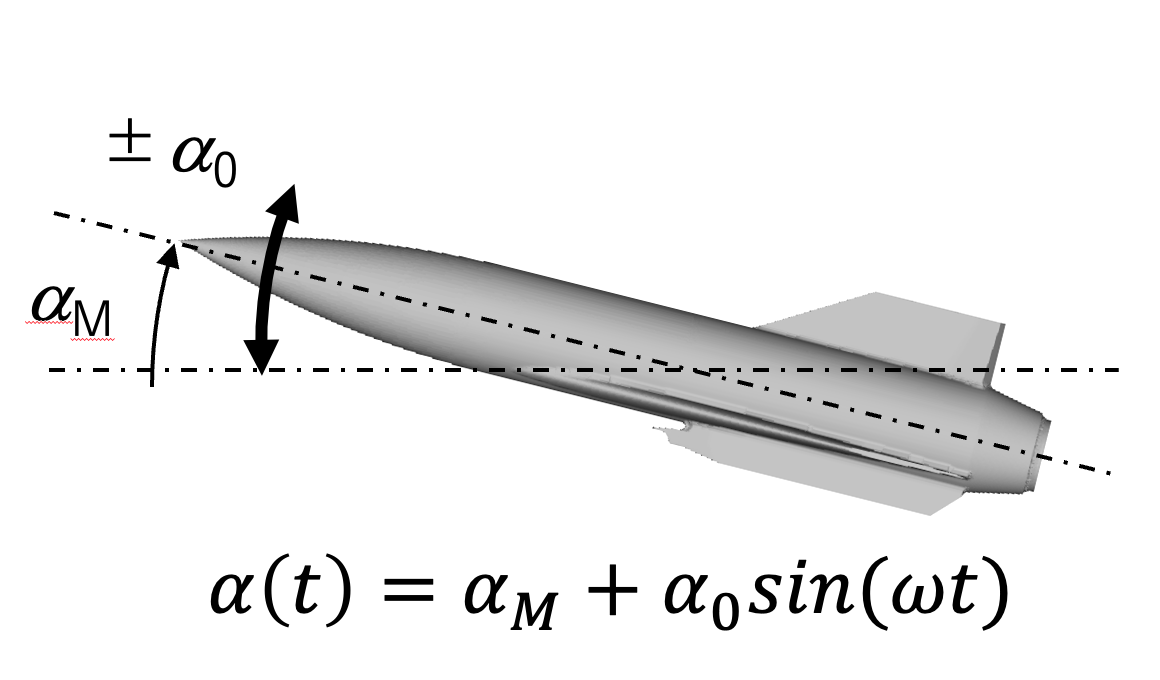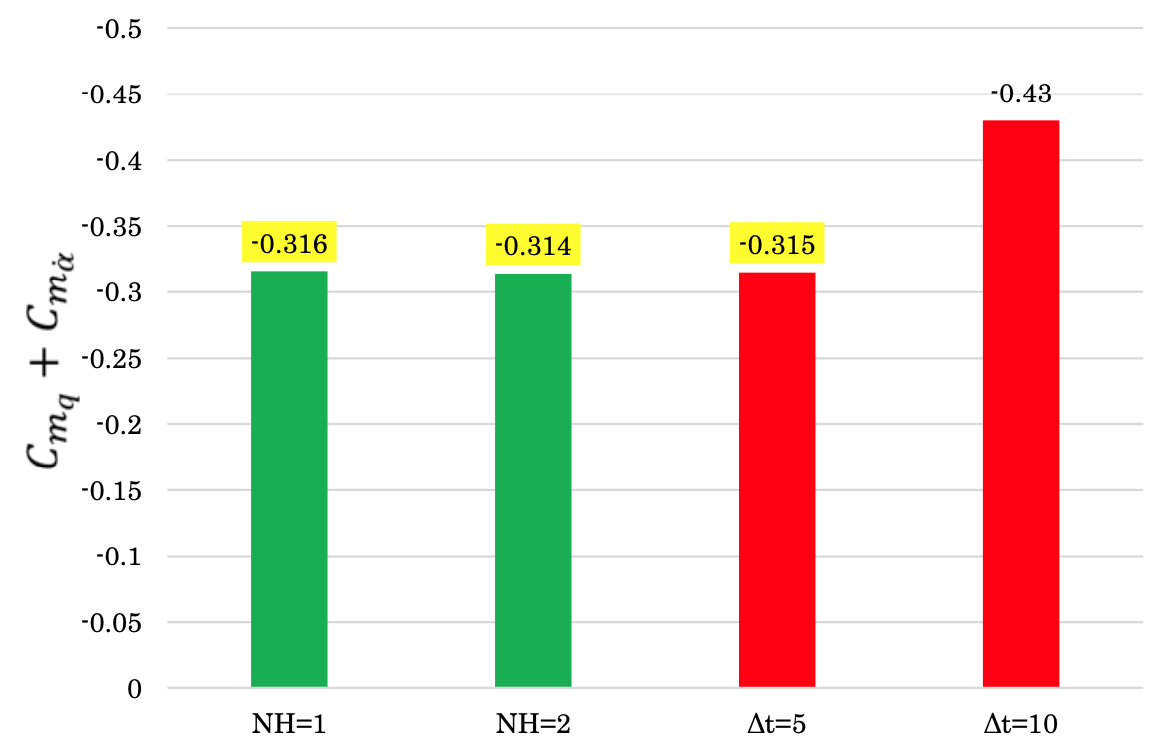Research on dynamic attitude stability evaluation of high-speed flying objects using CFD
JAXA Supercomputer System Annual Report February 2023-January 2024
Report Number: R23EACA60
Subject Category: JSS Inter-University Research
- Responsible Representative: Koji Miyaji, Professor, Yokohma National University
- Contact Information: Koji Miyaji(miyaji@ynu.ac.jp)
- Members: Koji Miyaji, Hiromi Yahata
Abstract
Using Computational Fluid Dynamics (CFD), this study aims to evaluate the static and dynamic attitude stability of high-speed flying objects. In particular, our analysis focuses on the High-Mach Integrated Control experiment (HIMICO), which is being jointly developed by multiple universities with JAXA. We will utilize both a generic time-marching method for unsteady flows and a computationally efficient time-spectral method for periodic unsteady flows to compare their computational accuracies. In attitude and trajectory calculations, we aim to improve the accuracy of trajectory prediction and attitude control by quantitatively determining dynamic stability coefficients, which have often been evaluated using simplified methods in the past.
Reference URL
N/A
Reasons and benefits of using JAXA Supercomputer System
For steady and unsteady Computational Fluid Dynamics (CFD) aerodynamic analysis around high-speed flying objects with complex shapes, a supercomputer capable of high-speed calculations is necessary. In JSS3, not only self-developed codes but also execution of analysis tools provided by JAXA are possible.
Achievements of the Year
(Figure 1) illustrates the body configuration and computational overview. The flight Mach number is set to 5 at a mean angle of attack alpha_M=0, and a forced pitch oscillation with an amplitude alpha_0=1 [deg] is applied about the center of gravity. The dimensionless angular frequency, normalized by the airflow velocity and semi-wingspan, is set to 0.025 (corresponding to a real frequency of 34.4 [Hz]). The CFD computational grid is generated using JAXA’s HexaGrid with approximately 7.6 million grid points.
Considering the motion equation of rigid body pitch oscillation, the damping component is derived from the component of the pitching moment history shifted by 90 [deg.] in phase from the reference forced oscillation. This yields the dynamic stability coefficient (pitch-damping sum). In the CFD calculations using a second-order time-marching method, the results for time steps of Dt=10 (approximately 1/930 of the forced oscillation period) and Dt=5 (approximately 1/1860 of the same period) are compared. Furthermore, for the periodic solution using the time-spectral method, the results for truncation orders of Fourier modes (Num. Harmonics) 1 and 2 are compared.
(Figure 2) shows the comparison of the pitch-damping sum for these four cases. While the difference due to the mode order NH is small, a clear difference is observed due to Dt. The results for Dt=5 and the time-spectral method are in good agreement, with the computational time for NH=1 being less than 1/5.
Publications
N/A
Usage of JSS
Computational Information
- Process Parallelization Methods: MPI
- Thread Parallelization Methods: N/A
- Number of Processes: 192
- Elapsed Time per Case: 4 Hour(s)
JSS3 Resources Used
Fraction of Usage in Total Resources*1(%): 0.00
Details
Please refer to System Configuration of JSS3 for the system configuration and major specifications of JSS3.
| System Name | CPU Resources Used(Core x Hours) | Fraction of Usage*2(%) |
|---|---|---|
| TOKI-SORA | 6382.99 | 0.00 |
| TOKI-ST | 795.41 | 0.00 |
| TOKI-GP | 0.00 | 0.00 |
| TOKI-XM | 0.00 | 0.00 |
| TOKI-LM | 0.62 | 0.00 |
| TOKI-TST | 0.00 | 0.00 |
| TOKI-TGP | 0.00 | 0.00 |
| TOKI-TLM | 0.00 | 0.00 |
| File System Name | Storage Assigned(GiB) | Fraction of Usage*2(%) |
|---|---|---|
| /home | 0.00 | 0.00 |
| /data and /data2 | 0.00 | 0.00 |
| /ssd | 0.00 | 0.00 |
| Archiver Name | Storage Used(TiB) | Fraction of Usage*2(%) |
|---|---|---|
| J-SPACE | 0.00 | 0.00 |
*1: Fraction of Usage in Total Resources: Weighted average of three resource types (Computing, File System, and Archiver).
*2: Fraction of Usage:Percentage of usage relative to each resource used in one year.
ISV Software Licenses Used
| ISV Software Licenses Used(Hours) | Fraction of Usage*2(%) | |
|---|---|---|
| ISV Software Licenses(Total) | 0.00 | 0.00 |
*2: Fraction of Usage:Percentage of usage relative to each resource used in one year.
JAXA Supercomputer System Annual Report February 2023-January 2024




